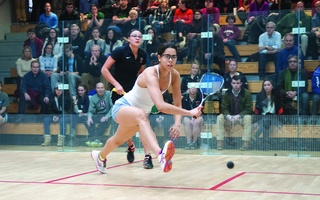Take a survey. Ask your friends what they think of when they hear the word “dynasty.”
If you’re dealing with a New York-ah, you’d probably hear about the Yankees. A Cali dude might cock his arm back to pass and bring up the Niners and the West Coast offense. In Chicago, they’ve got MJ and the Bulls taking names and selling shoes through the 90s.
Now ask yourself, who’s going to argue that the allegiances inspired by such dynasties weren’t good for these sports towns? Who can claim that consistently winning actually hurt these cities?
But the ripple effect on fans goes far beyond the teams’ hometowns.
Dynasties are like magnets for attention—attractive yet polarizing. Purely from the fans’ viewpoint, you either love ’em or hate ’em. This principle holds across all boundaries of city, state, age and class.
Consider the Yanks and how broad their fan base is throughout baseball. They draw huge attendances in every city they visit. Next, think about how much hatred they simultaneously inspire. The Sox are enjoying support from people across the nation right now. Not just because of the curse but also because of the team they’re facing.
Look at the NFL and the Cowboys, the so-called America’s Team that battled with a fading San Fran dynasty. Dallas had legions of fans in every city, all wearing an Aikman, Smith or Irvin jerseys. The ’Boys also enraged many a fan during the 90s–but there’s no denying that people tuned in hoping they would lose.
The current dynasty in the NBA is the Lakers, with Shaq and friends pulling in the younger crowd. They are L.A.’s team (not a hard choice when the alternative is the Clippers), but they’re also always one-half of a marquee matchup no matter whom they play.
That brings up the business side of things, which goes far beyond how many commercials networks sell during the Christmas primetime game. Dynasties build sports from start-ups into established leagues.
The best example is the NBA, which owes its success to two dynasties after the merger between the National Basketball League and the Basketball Association of America. The Lakers in their Minnesota form and the Celtics in with their Bill Russell face ruled basketball with the first three-peat and only eight-peat, respectively, and made the NBA a legit league. The Showtime Lakers of the 80s continued the “Magic” until Jordan’s Bulls took the reins.
Football can thank Vince Lombardi’s Packers in the 60s and the Steel Curtain in the 70s for drawing in the fans from the beginning of the Super Bowl. Dynasties also last—Green Bay had a decades long waiting list for a team that didn’t start winning again until the 90s. Baseball has always been America’s pastime, but the dominance of the Yankees, for instance, helps sell merchandise and sell out stadiums.
The parity we see in football and to some extent in baseball today can lead to the question of how the leagues continue to thrive. The answer is simple: every fan can claim that his or her team has a chance, but dynasties drew fans to the sport in the first place.
So take a look back at that survey you took. Don’t be surprised if the overwhelming majority say that dynasties are good for sports.
—Staff writer Brenda E. Lee can be reached at belee@fas.harvard.edu.
Read more in Sports
Nguyen Earns ITA BerthRecommended Articles
-
Kauf-ee Talk: NBA is Going Up in SmokeIn the wake of recent rumors of possible rule changes, NBA commissioner David Stern has been noticeably reticent about correcting
-
Bring Back the Lockout!Forgive me, but I hate this game. A mere six days into the brand-spanking-new NBA season, the basketball league-cum-soap opera
-
Coins Sent to Harvard MissionThe Harvard Mission has received from Rev. George P. Knapp '87, a foreign missionary located in Harpoot, Turkey, a collection
-
March to the Sea: The Dynasties DebateAnother baseball playoffs. Another Yankees appearance. Aren’t you sick of this? And I’m not just talking to the Indians, Mariners
-
 Women's Squash Approaching All-Time Status
Women's Squash Approaching All-Time Status













